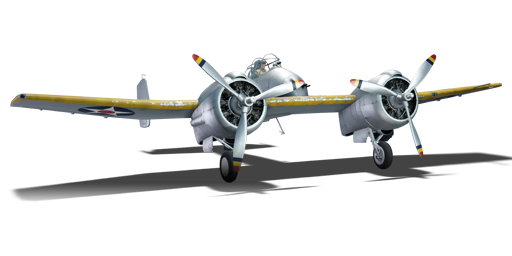

Aviation
XF5F
III
Rank
AB
3.0
RB
2.3
SB
2.3
Battle rating
USA
Research country
Fighter
Main role

Premium vehicle
Status
General information
Flight performance
Max speed
at 5,273 m
574542590558 km/h
Rate of Climb
9.77.112.37.3 m/s
Turn time
2122.520.221.8 s
Max altitude
9,400 m
Takeoff Run
280 m
Landing
flaps
flaps
Take-off
flaps
flaps
Combat
flaps
flaps
Air
brake
brake
General characteristics
Crew
1 person
Engine
Length
8.8 m
Wingspan
12.8 m
Wing Loading
180 kg/m²
Weight:
Base weight
4.324.464.214.44 t
Fuel in main tanks
0.77 t (56m)
Limits:
Max Speed Limit (IAS)
722 km/h
Mach Number Limit
0.71 M
G limit
≈ -7/11 G
Flap Speed Limit (IAS)
L / T / C
290 / 437 / 465 km/h
Gear Speed Limit (IAS)
370 km/h
Offensive armament
2 × 12.7 mm M2 Browning machine gun
Ammunition
400 rounds
Fire rate
750 shots/min
One-second Burst Mass
0.54 kg
| Belt | Belt filling | Armor penetration (mm) at a distance: | |||||
|---|---|---|---|---|---|---|---|
| 10 m | 100 m | 500 m | 1000 m | 1500 m | 2000 m | ||
| T/Ball/Ball/I/AP-I | 28 | 26 | 18 | 11 | 7 | 4 | |
| AP-I/AP-I/AP-I/T/I | 28 | 26 | 18 | 11 | 7 | 4 | |
| T/AP/AP/AP/AP-I/I | 30 | 27 | 20 | 13 | 9 | 6 | |
| T/T/T/T/T/AP-I | 28 | 26 | 18 | 11 | 7 | 4 | |
| AP/AP-I/AP-I/I/I | 30 | 27 | 20 | 13 | 9 | 6 | |
2 × 7.62 mm Browning machine gun
Ammunition
1,000 rounds
Fire rate
1,000 shots/min
One-second Burst Mass
0.16 kg
| Belt | Belt filling | Armor penetration (mm) at a distance: | |||||
|---|---|---|---|---|---|---|---|
| 10 m | 100 m | 500 m | 1000 m | 1500 m | 2000 m | ||
| T/Ball/Ball/Ball/AP/I | 13 | 12 | 7 | 3 | 2 | 0 | |
| T/AP/I | 13 | 12 | 7 | 3 | 2 | 0 | |
| AP/T/T/T/T | 13 | 12 | 7 | 3 | 2 | 0 | |
| AP/AP/AP/I/I | 13 | 12 | 7 | 3 | 2 | 0 | |
Economy
Repair cost
AB
894 

RB
3,114 

SB
2,426 

Crew training
10,000 

Experts
210,000 

Aces
700 

Research Aces
790,000 

Reward multiplier
AB / RB / SB
 2 x (80 / 225 / 390) %
2 x (80 / 225 / 390) % 
 2 x 154 %
2 x 154 % 

Premium vehicle
All modifications are unlocked
Flight performance | |
|---|---|
Survivability |
|---|
Weaponry |
|---|
Rating by players
You must play more than 3 battles for the last week and more than 10 battles in a vehicle to rate it.
Like:
21
Flight performance:
Not enough ratings
Survivability:
Not enough ratings
Aerial combat:
Not enough ratings
Ground attack:
Not enough ratings
Balance:
Not enough ratings
Tips & Tricks
This space is currently empty
Do you know any interesting vehicle features?
Loading...
No articles about this vehicle yet
Become the first author and get rewards!
Write a guide, tell about interesting historical facts, make a tutorial or simply an interesting post.
No more content